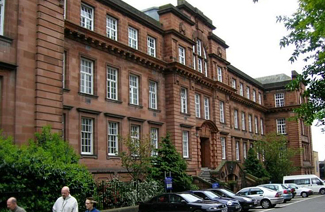Integrated Writing
The continent of Antarctica, centered on Earth’s South Pole, is one of the world’s coldest areas, supporting a very limited range of plants and animals. Some scientists believe, however, that around 15 million years ago, during the geologic period called the Middle Miocene, Antarctica was as much as 11C warmer than it is today, and it supported much richer ecosystems, including much more diverse plant life. They have several arguments to support that claim.
Pollen Grains
First, there is the evidence of pollen grains, small particles that plants release when they reproduce. Pollen grains from two types of trees dating to 15 million years ago have been found on the coast of Antarctica. Trees typically require much higher temperatures than the plants that currently grow in Antarctica. The presence of trees indicates that the plant life in Antarctica was much richer during the Middle Miocene, and that the temperature in Antarctica was therefore much higher than it is today.
Carbon Dioxide
There is also some indication that carbon dioxide (CO2) levels in the atmosphere were elevated during the Middle Miocene. Carbon dioxide is linked to climate warming because it traps heat. An important source of CO2 is volcanic activity. There were major volcanic eruptions during the Miocene. That suggests that atmospheric CO2 levels were higher than they are today, which would have contributed to the warming of the Antarctic climate.
Deuterium and Increased Rainfall
Third, high levels of deuterium have been found in the remains of plants that grew in Antarctica 15 million years ago. Deuterium is a chemical element present in rainwater. Since plants absorb deuterium when it rains, the amount of deuterium in a plant usually indicates the amount of rainfall: high levels of deuterium in the Antarctic plants from the Middle Miocene indicate high amounts of rainfall. High amounts of rainfall are often caused by increased temperatures.
Directions
You have 20 minutes to plan and write your response. Your response will be judged on the basis of the quality of your writing and on how well your response presents the points in the lecture and their relationship to the reading passage. Typically, an effective response will be 150 to 225 words.
Essay Topic
Summarize the points made in the lecture, being sure to explain how they challenge the specific arguments presented in the reading passage.

















